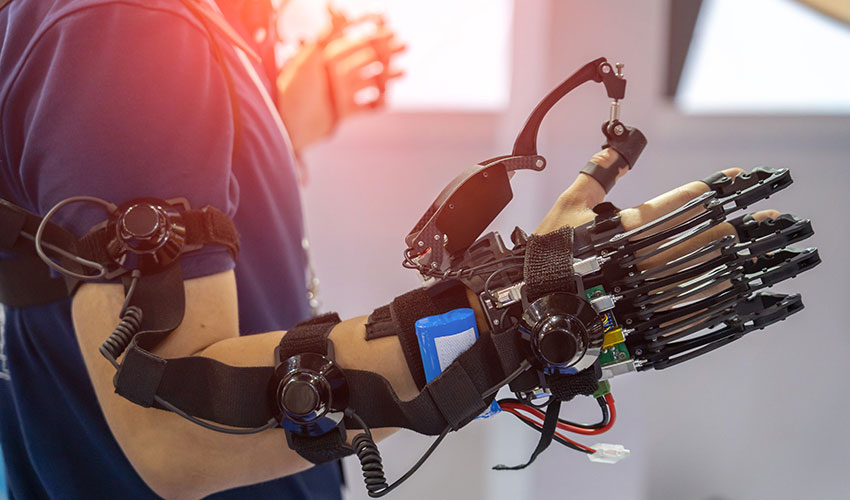4 Technologies to Improve Workplace Safety Rapid innovation in technology is impacting every corner of business operations—and workplace safety is no exception. Advances in nanotechnology robotics, data analytics, video and telecommunications are enabling employers to improve workplace safety in a variety of ways such as better monitoring employees’ health, reducing physical stress and keeping personnel out of harm’s way. In addition to protecting workers safety technology can help boost employee morale reduce turnover and control business insurance costs.
Virtually any company can benefit from investments in workplace safety technology. Businesses with physically intense operations—such as construction transportation and warehousing, and farming—may see the greatest benefits from the following four types of safety tech.
-
Wearables
Wearable technologies are now available that can help lower the frequency and severity of injury to workers. Wearable technology falls into four categories:-
Physiological Monitoring – Devices that track body temperature, heart rate, respiration, and other physiological measurements can help determine when a worker is fatigued or stressed and therefore at greater risk of injury.
-
Environmental Monitoring – These wearables can alert your employees of unsafe air quality or temperature conditions that could cause injuries.
-
Proximity Detection – This type of wearable, which can be embedded in personal protective equipment (PPE) like hardhats, can help prevent employees from entering hazardous areas or getting too close to equipment.
-
Exoskeletons and Exosuits – By providing assistive force for physical tasks, such as heavy lifting or standing for long periods, these wearables can help prevent injuries and enable injured employees to return to work more quickly.
Be aware that adapting some wearable technologies may raise privacy concerns with your employees.

-
-
Drones and robots
Manufacturing robots that perform repetitive and lifting tasks have long enabled businesses to reduce workplace injuries. Now your business may be able to further improve workplace safety by assigning higher-risk tasks to sophisticated, highly mobile drones and robots.
Drones—or Unmanned Aircraft Systems (UAS)—can be used by businesses such as construction companies and manufacturers to minimize employees’ exposure to falls and other risks by inspecting sites and monitoring operations. Similarly, robots can access hazardous difficult-to-reach locations—such as tunnels and storage tanks—to perform inspections and collect samples.
-
Safety apps
Smartphone apps are one of the easiest ways to leverage technology to assess, monitor and improve workplace safety. Available apps—many of which are free— enable workers and supervisors to evaluate tasks and working conditions by for example, measuring noise hazards promoting ladder safety and safe lifting, and providing guidance on handling hazardous materials. Some sector-specific apps also support workplace safety by helping businesses remain compliant with occupational safety regulations.
-
Virtual Reality and AR
Today, many tech vendors are already offering Virtual reality (VR) safety training programs that can enable your employees to practice using equipment and simulate working environments that pose potential risks. VR can also be used for training drills, such as fire evacuations. Looking into the future virtual reality and augmented reality (AR) technologies may be increasingly used to simulate tasks to measure and reduce risks—before a worker starts the actual job.







